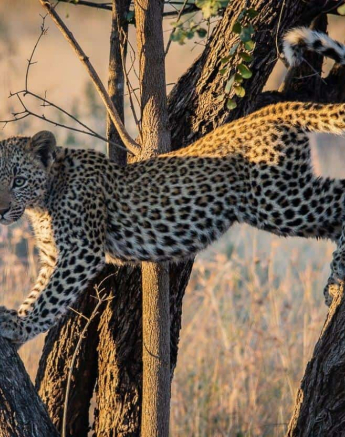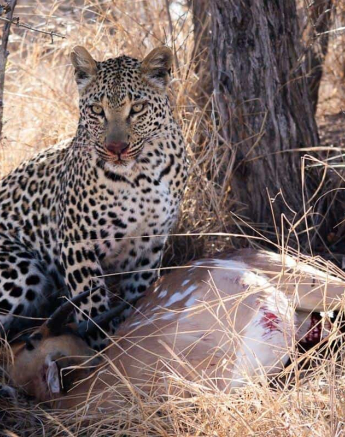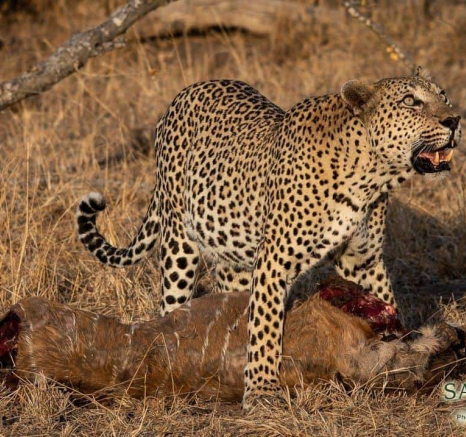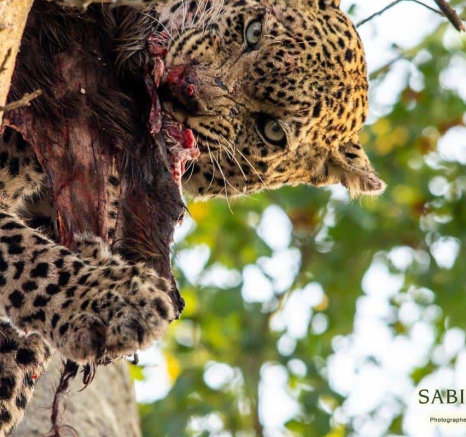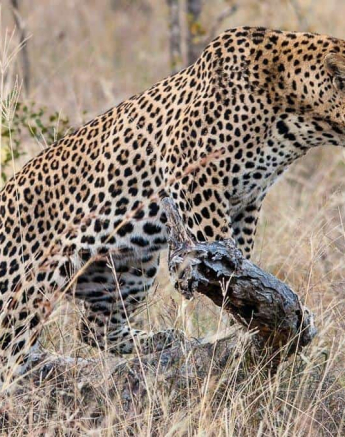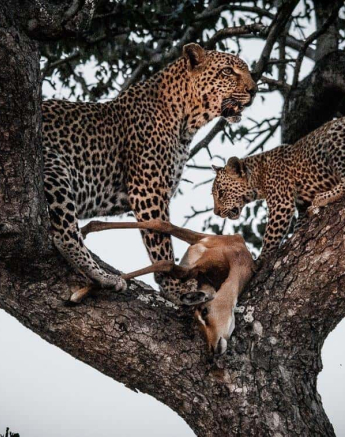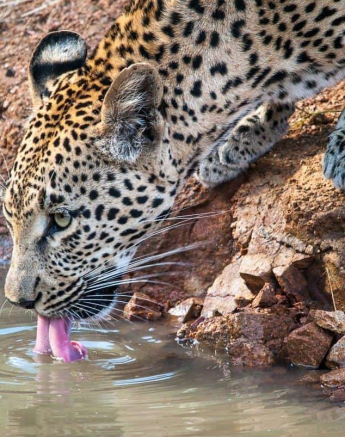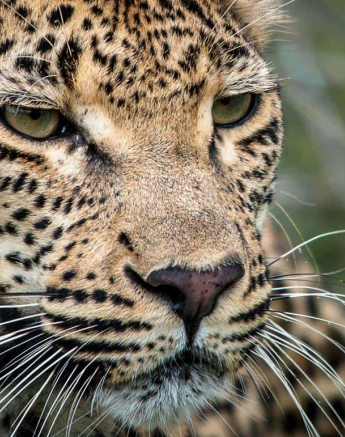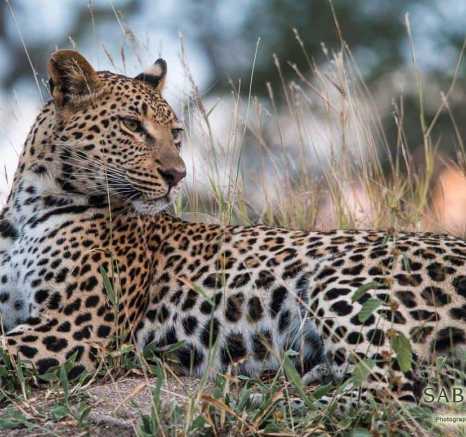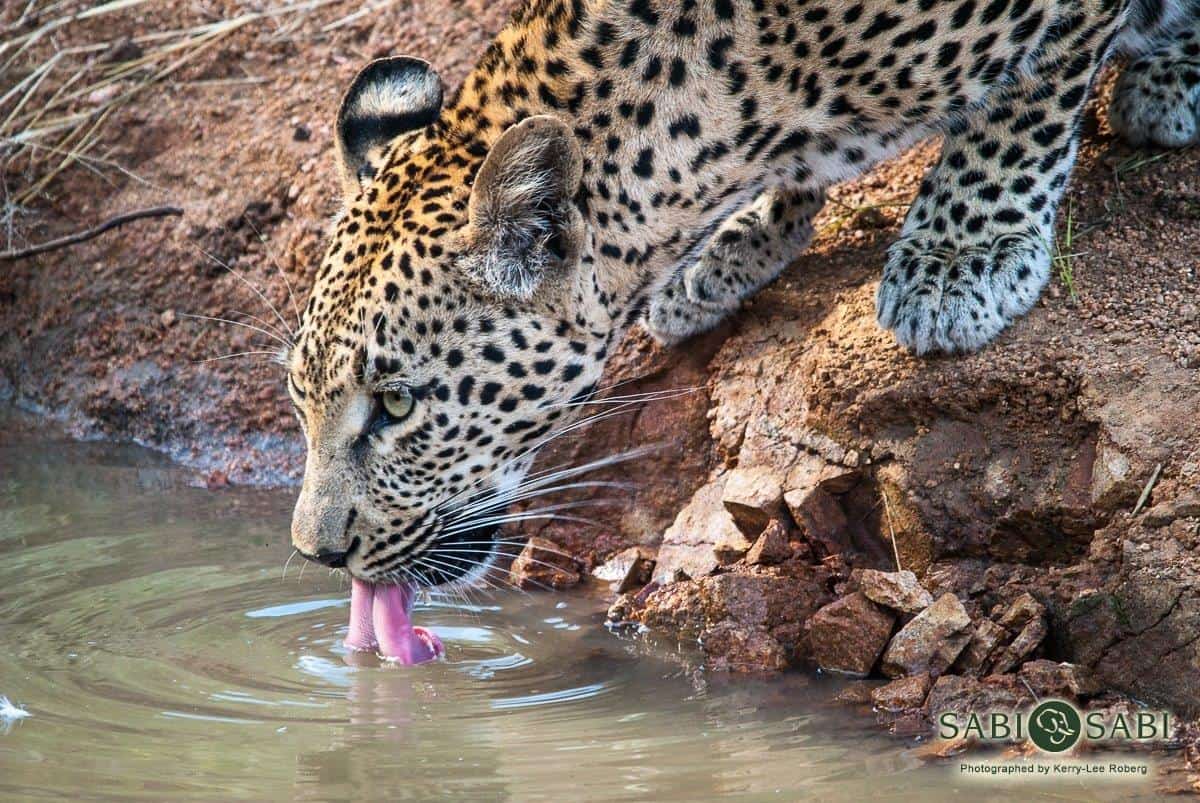The Leopard
on Nov 02, 2018Species name: Leopard
Scientific Name: Panthera Pardus
Weight: Male: ±90kg - Female: ±60kg
Shoulder Height: Male: ±65cm - Female: ±60cm
General Habitat: Varies, frequents shrubland
Diet: Carnivorous
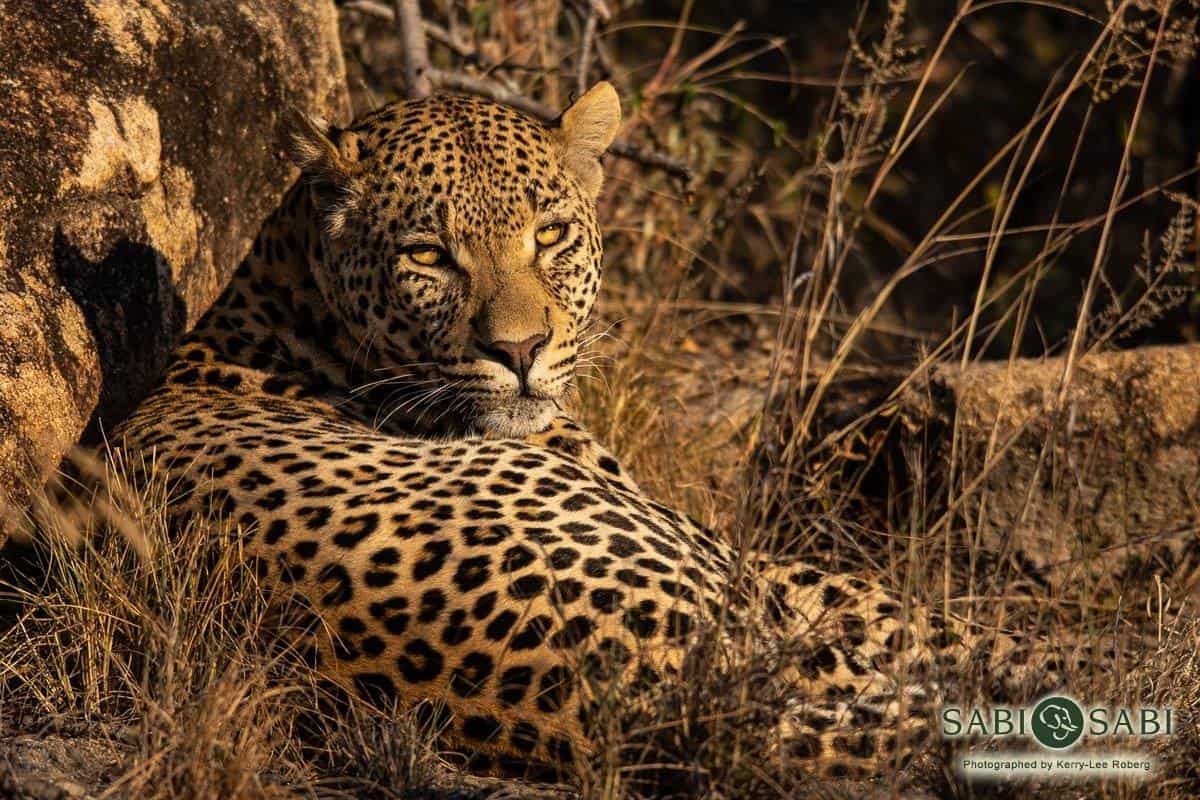
A leopard is one of the most beautiful, elusive and intriguing animals one could possibly ever hope to come across. Here at Sabi Sabi we have a rather uniquely prominent leopard population.
These large cats are special in that they are fiercely self-reliant and very solitary. Both males and females hold territories with females’ territories being around 23km2 and males slightly larger at around 33km2. A leopard marks his territory by urinating on vegetation and clawing trees, they can also be heard from time to time making a territorial call. Generally, the only time one comes across leopards socialising is either when two individuals are mating or if a female has cubs. A female leopard will go into oestrus every 46 days or so and will remain in this state for about a week, in this time she may mate with different males in her home range.
After a period of ±100 days, she will give birth to a litter of normally 1-3 cubs in a carefully selected den site. This site may be a rocky outcrop, disused burrow, large tree cavity or simply hidden in very dense vegetation. She will only bring her offspring out for brief periods after about 6-8 weeks, at this age they will still suckle but will be capable of eating small amounts of meat. Unfortunately, the mortality rate for leopard cubs is very high and often only one cub reaches maturity. One of the largest causes of death in the early stages of life is infanticide, often by other male leopards. It is thought that passing males will kill the cubs to bring the mother back into oestrus so he can mate with her and in doing so, pass his genes on. If the cubs beat the odds, they will remain with their mother for 1-2 years, in which time they are not only protected by her, but also learn how to hunt and fend for themselves.
Leopards have a rather varied diet and will eat anything from mice, birds and Scrub hares to bushbuck, impala, Vervet monkeys and kudus. Unlike a cheetah who relies on speed when hunting, the leopard is an extremely stealthy creature who relies on camouflage and ultimately being completely undetected by its prey. Once a potential meal has been located, the leopard will often survey the scene before crouching low and stalking the animal, once within a few meters the hunter will burst forward and give a short chase reaching speeds of about 60km/h. They will generally hoist their kill into a tree where they will feed off it for a few (±2-3) days. Having the kill elevated means it is relatively safe from being stolen by lions, wild dogs or Spotted hyenas... all of which pose a threat to leopards.
A leopard can often be aged by looking at its general appearance/condition. An older leopard will show the marks of a life well lived, they will usually have scarring on the face and notches missing from the ears. As these large cats are so territorial, they often experience conflict with others and therefore may get into many a dispute - that and the fact that acquiring a meal can be a dangerous endeavour at times. In the great outdoors, a leopard’s average life expectancy is anywhere from 12 – 16 years.
As these animals are territorial, we generally have the privilege of frequently discovering at least four individuals at Sabi Sabi. However, in the past few months I can count at least 10 different leopards spotted throughout the reserve. On our reserve we have a wide range of landscapes ranging from riverine vegetation and varying thickets to open savannah, boasting many suitable territorial sites.
My Memorable Sighting
I have had countless special sightings of these magnificent creatures and find it impossible to choose one specific event. I have been overjoyed watching leopards hunt (not always successfully), watched them drag kills up trees, seen them mate, seen them fight, watched as a playful cub clambers up trees, seen a male treed by a large herd of elephants and the list goes on.
Perhaps the most recent sighting is one that brings hope and promise for future sightings... a female leopard in the South of the reserve. A few evenings back we had stopped at a favourite spot to watch the sun set atop a rocky outcrop not too far from Earth Lodge. As we departed for drive a day later we heard a female leopard had been located near this spot so naturally we made our way, only to find her half way up said rocky outcrop. As we sat watching this supposedly pregnant female, to our surprise she was calling... a specific call I have not heard too often... and to our amazement we heard a faint cry in return – cubs! Her first litter! She had apparently given birth to a mystery number of cubs in a well-hidden cave, so we gave her her privacy and now hold thumbs for the next few weeks and wait in excited anticipation for the great reveal a few weeks down the line!
Photo & Video Content
